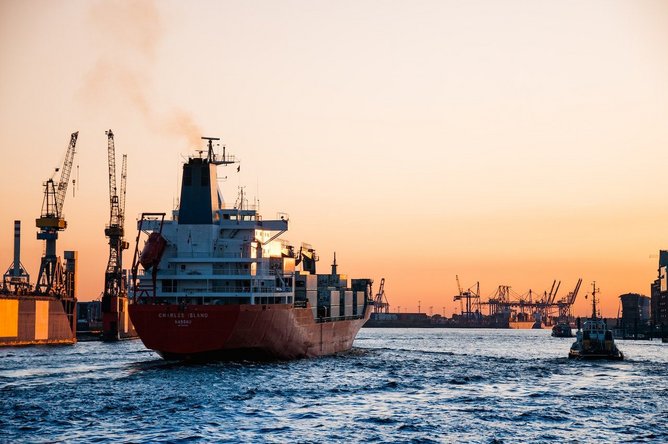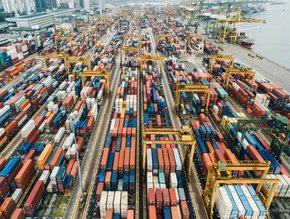'New Currencies' in procurement and the shifting landscape

Jan Wüllenweber, Senior Partner at Mckinsey and Company recently spoke at BizClik's Procurement and Supply Chain LIVE London, on the subject of "New Currencies in Procurement".
The changing nature of the supply chain environment, linked to emerging ESG considerations and an unpredictable supply chain terrain, is transforming procurement itself.
Wüllenweber spoke about how procurement leaders need to address different value ports. "In the past it was very much about net savings in the P&L," he says, "and now it's about other things such as Co2, supply structures and so on."
His talk spoke of 'win-wins in procurement' - where can organisation can reduce costs, while simultaneously reducing and Co2 emissions. This seems counter-intuitive for traditional supply-chain models. But the transpiring picture in procurement and supply chains is not just that cost and emissions reduction is possible, but that they are achievable and becoming increasingly coupled.
Wüllenweber says: "this is the tricky trade-off discussion that you need to actually deal with. We've seen in the past that it's important that that you find ideas - green steel is an example, since it's cheaper and it saves co2 - but the key thing is that procurement needs to develop equations or formulas to translate Co2 improvements into currency and that's the important thing to get started with.
Procurement needs to develop these ideas and formulas and decide where to put its focus. Wüllenweber spoke about the procurement 'Royal Flush'.
"The reason that we talk about 'currencies', is that we see other value dimensions becoming important, and not just monetary improvements. It's a little bit like if you were to talk into a casino, the question becomes, where do you actually place your bets? On which of the new currencies will you get the most impact?"

Wüllenweber believes that that's one of the questions that procurement leaders need to think about. "Should I focus my organisation on the Co2 currency, or more on the currency of healthier supply structures, or on the currency of short-term risk, to make sure that I'm prepared for shocks in the supply chain?" he says.
Answering these questions will allow for organisations to decide where they will place their cards.
According to Wüllenweber, to a certain extent the decision as to where leaders should put their focus first, depends on time. Structurally, for the next 1-3 years Wüllenweber expects that C02 will be the key-currency, simply because it is so relevant in many industries.
"However in the short term," he says, "I think it will be important to rethink your supply base. Organisations will need to ask "where do I actually have alternatives for single-source situations, where do I potentially have shorter, local alternative suppliers versus the global ones which may be more efficient from a total-costs perspective?"
This is why the decision criteria changes. In the past it was easy. You decided on total cost of ownership. So presently, you may have to invest a bit more but you'll have a better back-up safety net in case something goes wrong.
In the face of these changes, procurement needs to rebalance itself, which has less the implication of procurement being out of balance, and more about expanding the types of profiles that an organisation needs.
There have been some organisation that have understood that there are these different value ports, and for that you need different people. You need scrum masters in IT, you need people who understand the solutions market or people who understand market contracting. Wüllenweber says: "And because of this you need a more balanced portfolio of buyers in your supplier-base - understanding what the real new value dimensions are, and how they can be addressed beyond mere negotiating."
Asked about his point on strategic buyers, he explains that he always struggles a bit with the term, because a strategic buyer in reality is not only working on strategic topics, but have different value dimensions. "Some are creative, some are more expert in their specific field and some are market managers, for example," he says.
Wüllenweber believes that in the future, procurement organisations need to look beyond the one-size-fits-all in terms of describing the role of a buyer, and understand that there are different strengths. He says: "In terms of strength-base developments, some people are just better at understanding the markets and others are better at things like analytics. So we need to call this out and make sure we develop people in that direction."
Jan Wüllenweber advises consumer and advanced industry clients on operations-related challenges, in particular procurement transformations, cost optimisation, operating model improvements, inflation and resilience.
- Johnson & Johnson Tackling Emissions Across Supply ChainsSustainability
- Why Procurement is Key to Unilever's Climate Transition PlanSustainable Sourcing
- How General Mills Will use its Value Chain to cut EmissionsSustainable Sourcing
- P&SC LIVE Dubai: The Procurement Transformation ForumProcurement Strategy






